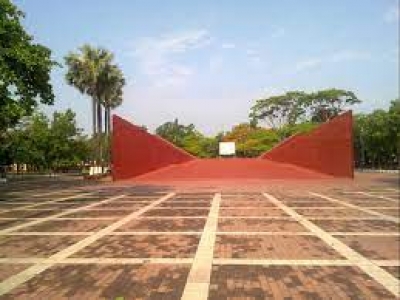Srinagar: And just like that November 25 is here again. One of the many reminders of Pakistans dual-faced, deceptive nature. In his book, ‘Forgotten Atrocities: Memoirs of a Survivor of the 1947 Partition of India’, Bal K. Gupta revealed that in Mirpur, “death seemed merciful, but the man had forgotten everything about it… Every night I used to think it to be the last one, I would pray for death to come”.
This is the story of the Genocide of 1947 in Mirpur, Pakistan-Occupied Kashmir. It has been 75 years since 18,000 brave Mirpuris chose martyrdom over submission while fighting with the Pakistani Army on November 25-27, 1947. The Army could only show their might to the defenceless and call that strength and power. Something they would be unable to portray in the subsequent wars with India.
Mirpur city, a largely Hindu majority, stood between India and Pakistan after the partition. In the second week of October 1947 the Pakistani government notoriously sent a bag of pamphlets written in Urdu to Mirpur reading that if the citizens would allow the Pakistani army to establish themselves in Mirpur, they would give them a special status in their country.
The patricians outrightly rejected the proposal of Pakistan and swore to fight to the last bullet if the Pakistani Army advanced.
Pakistan could only capture Mirpur over their dead bodies, they declared.
On October 26 when Pakistan had to gulp down the bitter truth that Kashmir would belong to India, they made a secret pact with Pathan mercenaries, the “Zen and Zar Agreement”, which stated that after the capture of Mirpur city, the women would belong to the Pathans, while the immovable property (land) would be Pakistani.
The Pathans rained heavy gun operations and wiped out the Hindus and Sikhs. November 24, the doomsday, saw a thick cover of artillery shelling and bursting of heavy grenades, a declaration of war by Pakistan in Mirpur. The young men fought the resistance by hand to their last breath. On that day alone the wolves had the blood of 12,000 citizens on their hands, covering each inch of the land. But this was not the end of their obliteration – during the night 4,000 townspeople were held captive and were asked to surrender all their cash and jewellery. The men were tortured and killed throughout the night. The women automatically “belonged” to the Pathans according to “Zen and Zar”.
The remaining townspeople were held captive in Alibeg prison, which was essentially a Sikh Gurudwara. A Sikh Holy shrine was converted into a slaughterhouse. The chilly Himalayan winds cut through the dissected heads of the captives, their peeling skin, and lifeless necks requesting death. They prayed for mercy, for a quick slash of sword or a bullet in the heart – an easy death. The Holy River Jhelum flowed crimson for the entire month it is said.
In remembrance of the martyrs, the Government of Jammu and Kashmir constructed a Memorial, ‘Mirpur Shaheedi Samark’ at the
‘Mirpur Road’ (Jammu), in 1998 to pay tribute to the unsung heroes of the country who laid their life but did not submit to the satanic plans of Pakistan. Every year the few hundred Mirpuris who could escape death march at the memorial and pay floral tributes to the martyrs.
The upholders of Human Rights have chosen to ignore Mirpur for far too long. Only because the story of Mirpur is not sensational enough to serve any agenda.
One would think 75 years after winning Mirpur and fulfilling their desire, Pakistan would treat it like a prized possession. But that is not the case.
To deal with the cold of November, people are burning their wooden furniture. There is no electricity for 22 hours of the day. There was no running water in 2022 and people have had to use the polluted river water for all purposes including cooking. Government workers and contracted labourers of the government have been denied salary since 2021.
Children of school-going age are sitting at homes resorting to drugs to escape life. The post office cannot pay pensions to former servicemen because there are no funds. Young girls are forcefully sent to Pakistan military personnel stationed at the Line of Control to satisfy their carnal appetite.
Mirpur was a haven of mesmerising sunrises and sunsets, religious harmony, and quality life. Today this soulless city holds the 7th largest dam in the world, Mangala Dam, built on the graves of courageous people who fought for their homes.
The world wonders, what does it take for a so-called “peaceful” and “highly-religious” country to be this shameless?
–IANS


Comments are closed.